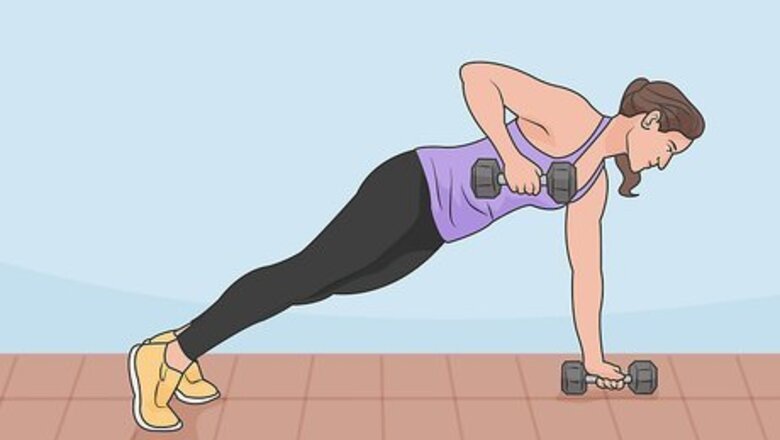
views
Maximizing Your Resistance Training
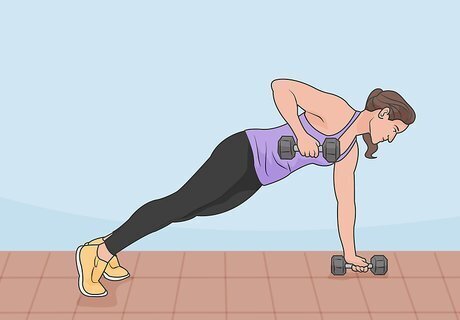
Exercise each major muscle group 2-3 times per week. Resistance training, whether you use free weights, exercise machines, fitness bands, or your own body weight, is the key to turbo-charging your muscle protein synthesis (MPS). To keep MPS in high gear, do resistance training at least every other day, and work each major muscle group at least twice per week. You might, for example, use a regimen like the following: upper body day, lower body day, off day, core day, upper body day, off day, lower body day, and so on. Rotating through your muscle groups makes it easier to do more resistance training overall, which equals greater MPS benefits. There’s no ideal length for each workout session, but 45-60 minutes is probably a good starting point. Resistance exercise stimulates MPS for 24-48 hours, although the benefits start to decline more rapidly after 36 hours.
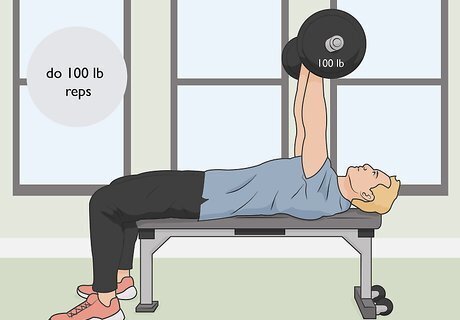
Do repetitions at 70%-90% of your "one rep max" level. Your "one rep max" is the maximum amount of resistance you can handle in a single repetition (rep)—for instance, the max weight you can lift for a single bench press rep. To stimulate MPS, the ideal balance point is to do resistance training at 70%-90% of your "one rep max" over a reasonable number of reps and sets. You can determine your "one rep max" by increasing resistance—for instance, adding weight to your bench press—until you can't complete a single rep using proper form. This method carries injury risks, though, and it's essential that you use a spotter, especially with free weights. You can also refer to charts and online calculators to determine your "one rep max." Do your "five rep max," for instance, enter the data into the calculator to get your "one rep max," then calculate 70%-90% of this amount. For example: If you can do 5 reps of bench presses at 100 lb (45 kg), entering this info into the online calculator will give you a "one rep max" of around 113 lb (51 kg). In turn, 70%-90% of this max amount is 79–101 lb (36–46 kg), which is your ideal resistance range for MPS.
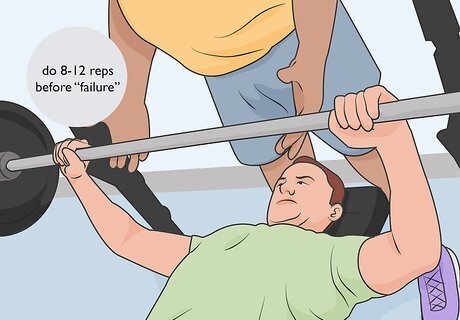
Complete enough reps per set that you’re near your “failure” point. At 70%-90% of your max, you’re likely to do around 8-12 reps before approaching “failure”—the point at which you can’t do another rep. Aim to be 1-2 reps short of failure with each set. So, for instance, if you can do 12 leg press reps at 70%-90% of your max resistance before achieving failure, do 10 or 11 reps per set. Your failure point may vary somewhat day to day. Some days, 8 reps may get you within 1-2 of your failure point. On others, 10 might do it. Listen to your body—when you feel like failure is imminent, stop your set, even if it’s a few reps earlier than expected.
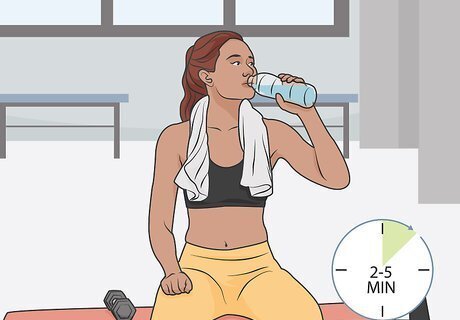
Rest for 2-5 minutes after each set. It’s not entirely clear why resting for at least 2 minutes between sets helps to maximize MPS. But that’s what the evidence indicates! At the very least, taking a slightly longer rest than you’re used to should make it easier to complete more reps near max capacity. Take a few drinks of water, walk around a bit, and maybe do some light calisthenics to keep your muscles warm while you rest between sets.
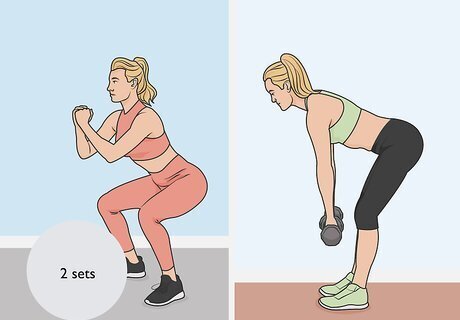
Do at least 2 sets per target muscle group per session. As with reps, there’s no “magic number” of sets to do in order to increase MPS. It appears, however, that completing 2-3 sets per target muscle group may be more beneficial than doing either 1 set or more than 3. You might, for instance, do 3 sets of leg presses, then move on to 3 sets of leg extensions, and so on. Or, you might cycle through your workout by doing 1 set of each exercise, then repeat the process: for example, squats, leg extensions, step-ups, deadlifts, leg curls, and leg presses.
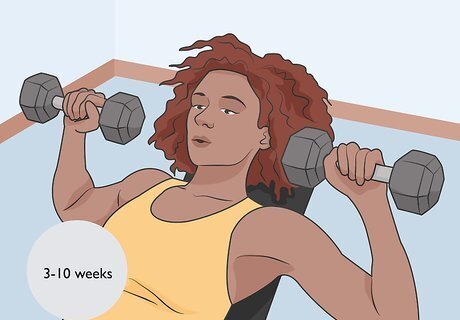
Build up to your max MPS results over 3-10 weeks. If you dedicate yourself to a stringent resistance exercise routine, you may be able to ramp up your body’s MPS to its peak level in as few as 3 weeks. It may, however, take up to 10 weeks to peak, and in any case, you’ll need to keep up with your routine to maintain this peak. So stick with it! Remember that you’re dealing with a fairly straightforward math equation—if you keep your MPS rate above your MPB (muscle protein breakdown) rate, you’ll increase your muscle mass. MPB stays fairly constant no matter what you do, but you can greatly impact MPS with your exercise and dietary choices.
Calibrating Your Protein Intake

Set your daily protein target at 1.5 g per kg of body weight. Expert opinions vary on the ideal amount of daily protein for boosting MPS. That said, aiming for 1.5 g of protein per 1 kg (2.2 lb) of body weight is a sensible goal for most people. Adjust the goal upward or downward depending on your particular needs. If you weigh 50 kg (110 lb), for example, aim for 75 g of protein per day. If you weigh 80 kg (180 lb), aim for 120 g. For the sake of comparison, the U.S. recommended daily allowance (RDA) of protein is 46 g per day for women and 56 g per day for men.
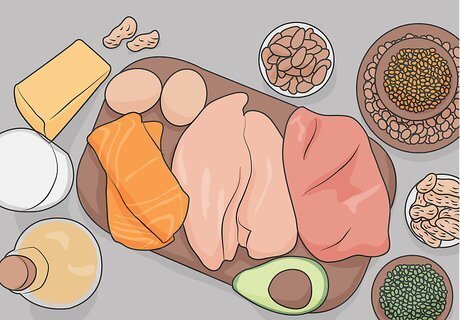
Try to get most of your protein from food rather than supplements. There’s some evidence that food proteins are superior to protein supplements in supporting MPS, but, at the same time, it can be difficult to consume 1.5 g per kg of protein per day through food alone. Protein powders, shakes, and other supplements likely have a role to play if you’re looking to maximize MPS, but prioritize eating healthy, protein-rich foods when possible. For example, an early breakfast of Greek yogurt and whole-grain toast with peanut butter, followed a few hours later by a mid-morning meal of 2 eggs and cereal with milk, gives you around 50 g of protein. If you do choose to use protein powders or pre-mixed shakes, choose ones that are low in sugar and calories. Also, choose supplements that are made by reputable manufacturers and sold by well-known retailers.
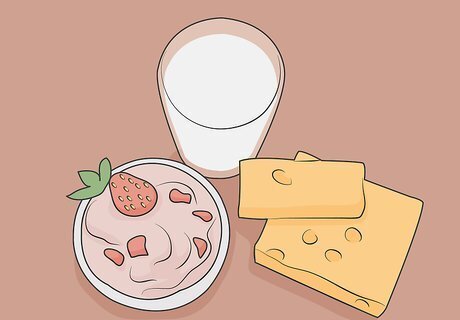
Prioritize rapidly-digested proteins with high EAA content. The essential amino acids (EAA) in proteins appear to be the key component in promoting MPS. Leucine in particular seems to be the most vital EAA for MPS. Milk-based proteins such as casein and especially whey are high in EAA, digest quickly, and are great options for enhancing MPS. All dairy products are good sources of casein. Milk and yogurt are excellent sources of whey. Whey is also widely available in powdered form and pre-mixed in protein shakes. If you don’t consume dairy, pea protein is likely your best alternative, with soy protein, rice protein, chia protein, and hemp protein as other options. These vegan options are all available in powdered form.
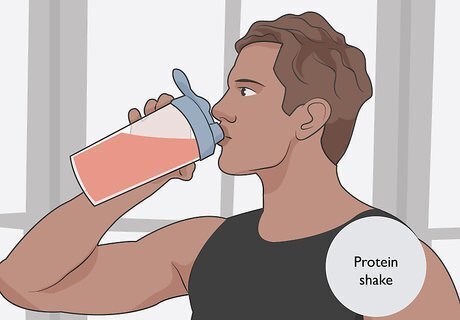
Have 25 g of protein immediately after your resistance workout. Combining your resistance workout with a protein boost may turbocharge MPS. There’s no definitive proof that ingesting protein right after a workout is superior to before or during the workout, but waiting until afterward is often the more comfortable and convenient way to go. 25 g of protein, including 10 g of EEA, is a good after-workout goal. A serving of plain Greek yogurt and a handful of nuts gets you into this range, or you can opt for a protein shake. If you can’t have protein right after your workout, aim to have it within 2 hours.
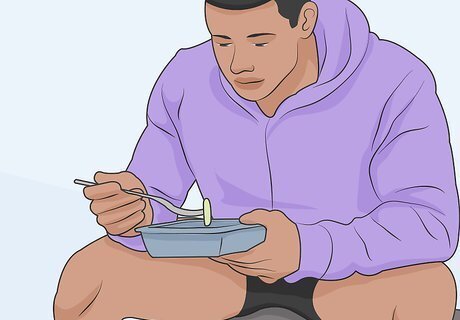
Eat 10-20 g of protein every 3-4 hours, and a bit more at bedtime. Consuming protein consistently through the day appears to provide greater MPS benefits, as opposed to consuming large amounts a few times per day. Aim for 10-20 g with each snack and meal, and boost that to 20-40 g the last time you eat before bedtime. A serving of skim or 1% milk has about 8 g of protein; a serving of peanut butter, about 7 g; a serving of beef jerky, about 12.5 g; a serving of cottage cheese, about 14 g; a serving of cooked chicken breast, about 7 g; and a serving of hummus, about 7 g.
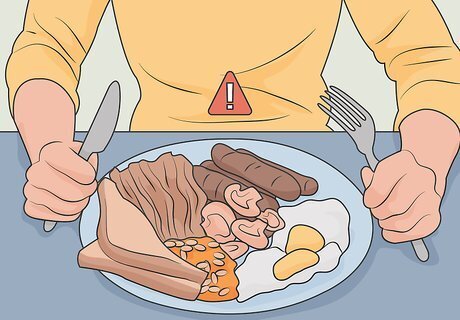
Cap your maximum daily protein intake at 300 g. More protein is better for MPS, but only up to a point. Once you get into the range of 300 g of protein per day, your body begins to produce excess ammonia, which is a toxic substance in high amounts. So, even if your 1.5 g of protein per kg goal puts you at higher than 300g, don’t go above that amount without consulting your doctor first. At 1.5 g per kg, 300 g of protein would be the daily goal for someone weighing 200 kg (440 lb).


















Comments
0 comment